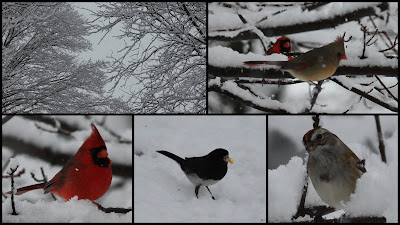On Saturday, September 10, 2011,
The Wetlands Initiative celebrated 10 years of habitat restoration work on the
Sue and Wes Dixon Waterfowl Refuge at Hennepin & Hopper Lakes in Putnam County. It features a large cattail marsh, as well as other water-loving habitats.
 |
| Cattail Marsh at Hennepin & Hopper Lakes |
By the end of the 20th-Century, about 90% of the wetlands in Illinois had been drained, ditched, filled, or levied off for agricultural, industrial, and recreational purposes. But with the vanishing wetlands, we were losing a natural resource for cleaner water, flood control, carbon capture, biodiversity, as well as an economic and recreational resource.
 |
| Farmland in 2001 |
The Wetlands Initiative has set out to change that. TWI Founder Al Pyott told how local residents wanted to see the Hennepin drainage district converted back to its former natural condition, a place where large flocks of ducks and geese would congregate during migration and with excellent fishing. Part of the Illinois River watershed, the project has restored 2,600 acres of drained farmland to a native wetland. The transformation is amazing.
 |
| Wetlands in 2011 |
The 10th Anniversary event encouraged a prolonged, "lazy" visit, including a 2-mile hike long the seep trail (from which our group saw 7 immature Bald Eagles roosting on snags over the water), a hike along the new boardwalk and into a moist sedge meadow, as well as a couple of hours of paddling out on the water.
 |
| Natural Seep |
There were plenty of butterflies and dragonflies, as well as some great early fall flowers in bloom, including Stiff Gentian, Cream Gentian, lots of Great Blue Lobelia, Cardinal Flower, and an orchid called Nodding Ladies'-Tresses.
 |
| Nodding Ladies'-Tresses Orchid |
Dr. Gary Sullivan explained that most of the plants returned on their own, because the seeds survived 100 years of agricultural treatment such as disturbance, drainage, fertilization, and pesticides. Only a few plants have been introduced. The Wetlands Initiative just added water (and fire through a rotation of controlled burns).
 |
| Cardinal Flower, a wetland jewel |
 |
| Red Admiral Butterfly |
For me, the very best part of the day was being out on the water. I've been wanting to see the place from the water for over a year, and this was a perfect opportunity to do it.
|
|
| Least Bittern, an obligate wetland bird |
Considering that full-blown duck migration is several weeks away and that other people were also paddling through the cattail marsh, we still saw a number of waterfowl and wetland birds, including Blue-winged Teal, Mallards, Canada Geese, Wood Ducks, Black-crowned Night Herons (state-endangered), a family of Common Gallinules (state-endangered) off the boat ramp, and a very close encounter with a Least Bittern (state-threatened). Earlier this year in the spring, I saw hundreds of Canvasbacks and a male Yellow-headed Blackbird (state-endangered). Clearly, this new habitat is appreciated by the migratory and breeding birds that rely on wetlands!
Here's a video postcard of my day at this beautiful place.
The Refuge is open to the public year-round, thanks to
The Wetlands Initiative!


















































